One of the unique letters is the Arabic letter Kha (خ), which resembles the letters Haa (ح) and Jeem (ج) but is distinguished by a dot above it. Understanding the arabic letter kha in all its forms is essential for learners who want to read and write Arabic fluently. This lesson focuses on how Kha looks and connects in the beginning, middle, and end of Arabic words.
Learning Arabic Letter Kha Through Fun Activities
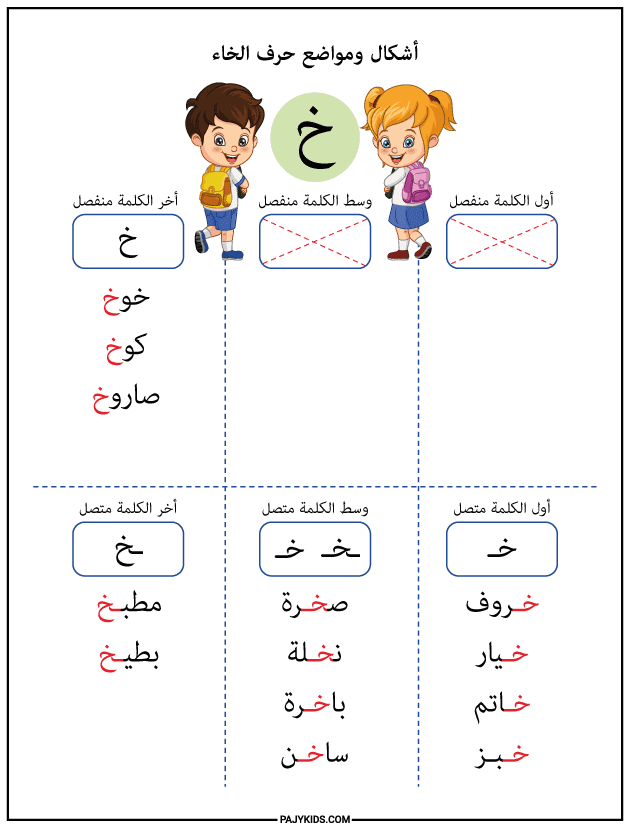
- Initial Form of the Arabic Letter Kha (خـ)
When arabic letter kha appears at the beginning of a word, it takes the form خـ, and connects to the letter that follows it. For example: خبز (bread), خريطة (map), and خيمة (tent). Recognizing this initial form helps learners distinguish Kha from similar letters and improves reading skills in early Arabic learning stages.
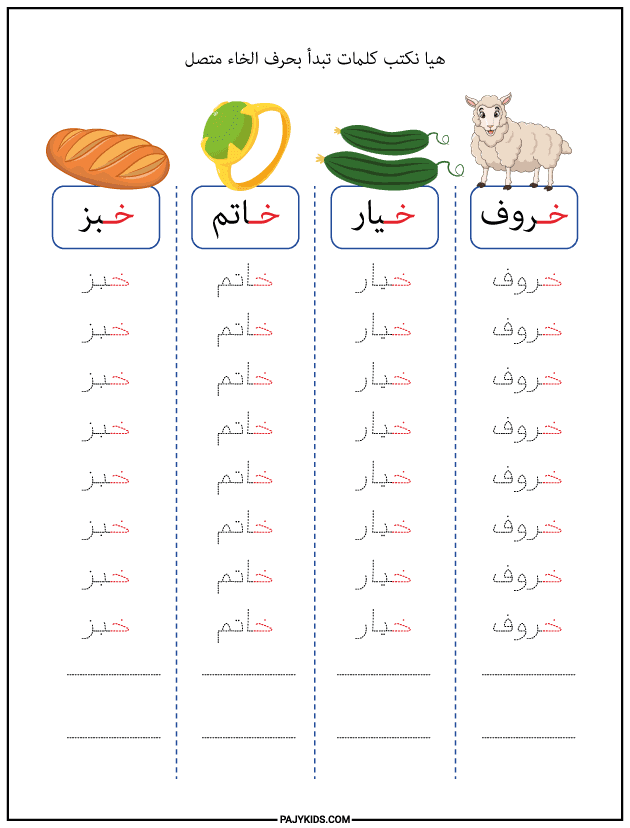
- Medial Form of Kha (ـخـ)
In the middle of a word, the letter kha connects to both the letter before and after it and appears as ـخـ. Examples include صخرة (Rock), نخلة (Palm Tree). Practicing this form helps students understand how Arabic letters flow in cursive and how different shapes represent the same letter.
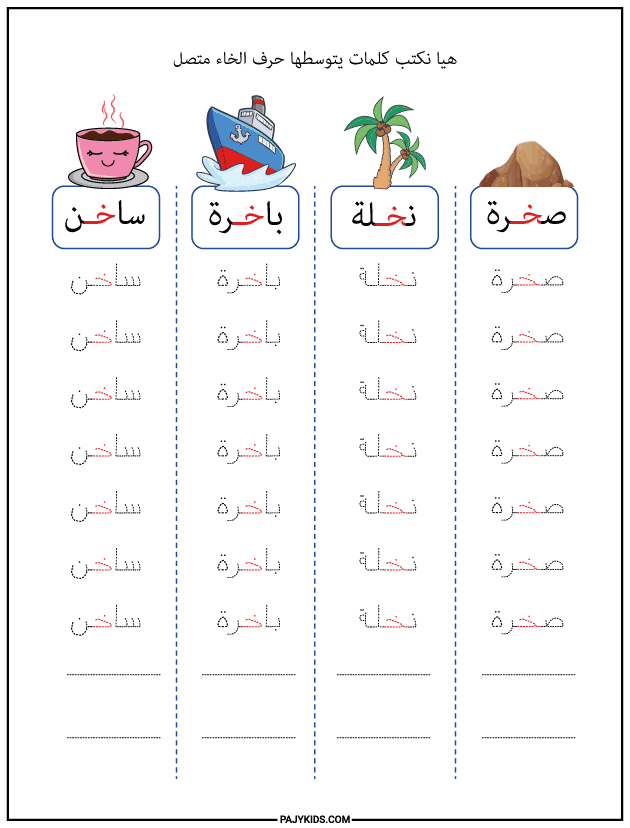
- Final Connected Form of Kha (ـخ)
When the letter appears at the end of a word and is connected, it takes the shape ـخ. Examples are: بطيخ (watermelon), and مطبخ (kitchen). Mastering this version of the arabic letter kha supports the learner’s ability to identify word endings and enhances writing fluency.
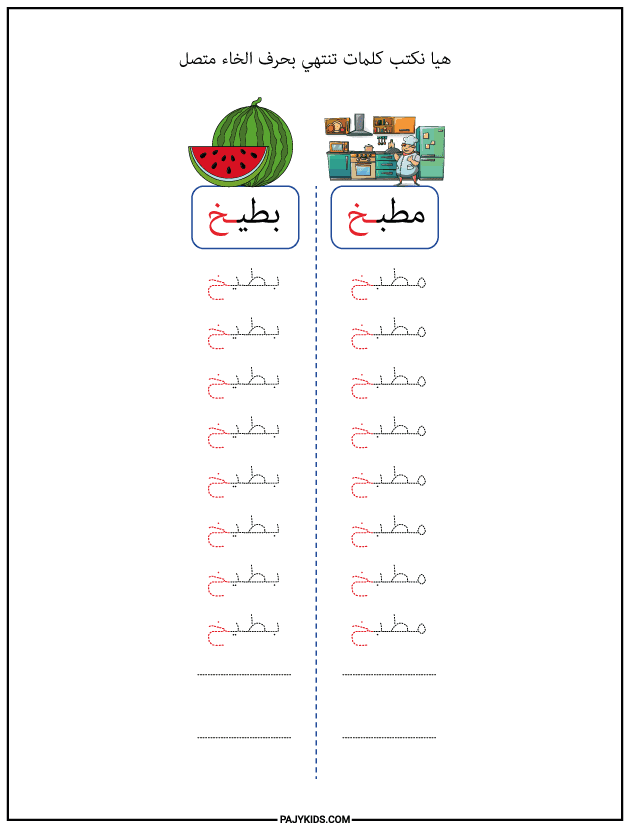
- Isolated Form of Kha (خ)
In its isolated form or when it follows a letter that does not connect, arabic letter kha is written as خ. Words such as خوخ (Peach) or كوخ (Hut) showcase this version.
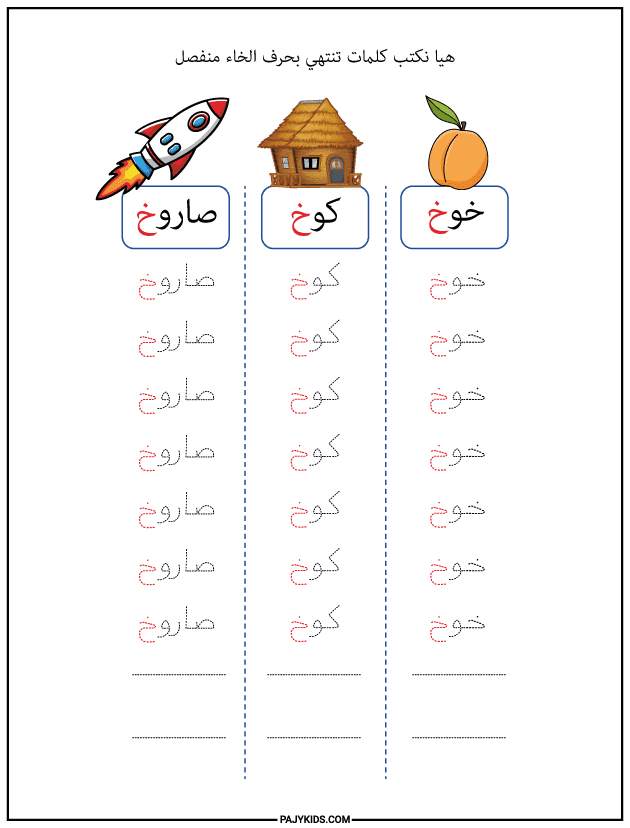
To fully grasp all shapes of the arabic letter kha, students can use tracing exercises, flashcards, coloring activities, and digital learning apps. Pairing visual forms with sound recognition (the “kh” sound) strengthens both reading and pronunciation skills. Daily practice using real words ensures that the student retains the shapes naturally.